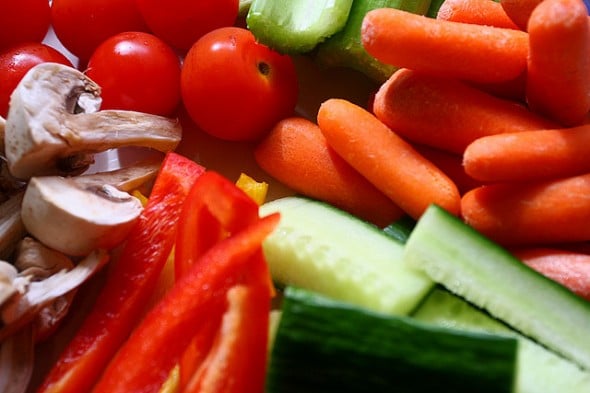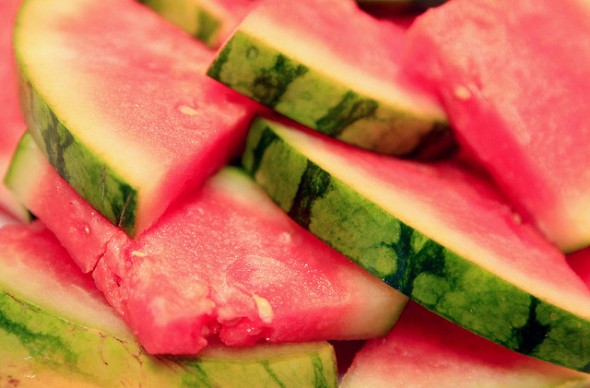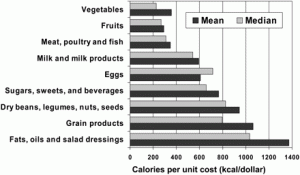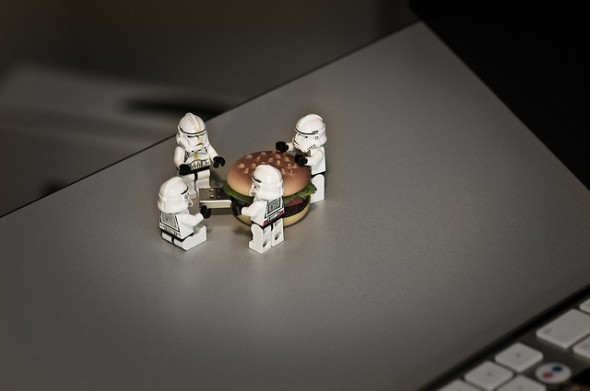Photo Credit: racorn / Shutterstock.com
March 16, 2014
|
In a culture where we worry about unregulated chemicals and food
additives, it’s shocking how little we know about one of the most common
ones: caffeine. We spend a lot more time consuming the drug than we do
thinking about it, says author Murray Carpenter. Meanwhile, none of the
companies peddling it have been willing to talk about it. And the FDA,
up until very recently, has been remiss in not regulating it.
“It
is a topic that many of us feel we know a lot about,” Carpenter said.
“But the more I got into it I found out that a lot surprised me.” What
he found was a mixed picture: Caffeine isn’t all bad, but it certainly
isn’t all good, either. And the information we need to maintain a
healthy relationship with it is, for a large part, inaccessible to us.
I was several coffees in when I reached Carpenter to talk about his new book, “
Caffeinated,”
which delves into the history, science and industry interests
surrounding the mind-sharpening white powder. As befits two addicts
talking about their shared addiction, things got a bit confessional. As
such, this interview has been edited for length, clarity and personal
details.
Is caffeine just another drug? Is it something
that people are forming real addictions to? And if not, how do we
distinguish it from something that is completely unregulated or, say,
bought on the street?
Well, yes to your first question.
It is just another drug. It’s been well-established for over a century
that people know it’s a drug that has very predictable effects when you
take it.
In terms of addiction, it’s really fraught, of course. It
is certainly addictive in the sense that it has a number of
characteristics that we associate with addictive drugs. You crave it,
develop a tolerance to it, and certainly most people who are at least
moderate to heavy users will undergo some withdrawal symptoms on ceasing
its use. These are qualities that we associate with addictive drugs.
There are some people who, of course, argue that without some kind of
really negative social connotations, a drug doesn’t really deserve the
term “addiction.” So some people like to call it a “mildly addictive”
drug. This is to say people aren’t missing work because they’re jonesing
for caffeine or holding up a bank or ruining their family relationships
because they’re addicted to caffeine.
There are also some people
who — and this is another characteristic of addictive drugs — either
want to moderate or eliminate their consumption of caffeine for various
reasons who have a hard time doing it.
Yeah, I’ve been there.
Right, I think a lot of people have. So why did you try to quit? Was it for pregnancy, for fun or for sleep?
No.
I’ve just gotten to the point where I’ll get a headache if I don’t
start my day with a cup of coffee, which makes me think it can’t be
healthy.
So did you quit cold turkey?
I’ve never quit cold turkey. No.
Yeah, OK. But have you gone down to zero?
Not since I really became a daily coffee drinker. I can’t.
And,
you know, this is really interesting. This is one of the things. I
think you’re aware of this, but I think for a lot of people, it’s almost
like wallpaper. Not just physically in our brains and in our bodies,
but the habit is so reflexive that people just tend to take their coffee
every day. A lot of people who don’t think about it very much don’t
remember the last time they didn’t have a cup of coffee. I’ve certainly
talked to people who have for decades not skipped their coffee and still
don’t think caffeine is a particularly big deal to them.
You will hear this common perception, though, that it’s an unhealthy habit. And as you write, there is some evidence to the contrary …
You’re
dialing in on it. All these questions are really great because I think a
lot of us have this sense of unease. Well, we love coffee or we love
caffeine, but we feel like, “Hey, maybe it’s not good for us.” So the
question everyone wants to know is, what’s the verdict? Is it good for
me or is it bad for me?
I think the simplest answer — and this is
what you were getting toward, right? — the simplest answer is if you’re
not pregnant or expecting or hoping to become pregnant, and you don’t
have trouble with insomnia or anxiety, and you’re happy with your
caffeine use, I’ve seen nothing to indicate that it’s going to shorten
your life or make you less healthy. And, of course, then there are some
things that suggest, specifically, that caffeinated coffee — and this is
distinct from caffeine — may even have some beneficial health effects.
Is coffee even our main source of caffeine anymore?
It
is. We’re taking more caffeinated soft drinks, by volume, and we’re
spending more on them. But coffee remains the primary source of caffeine
in our diet, by far and away, actually.
So it’s the rise
of other foods and drinks being injected with caffeine that’s getting
the FDA’s attention, and making people start to rethink things. Things
like caffeinated gum … I think I even saw a caffeinated body spray once.
I’ve
got that here on my desk. And you’re a caffeine user, so you would
appreciate how unappealing this thing is. Right here in the brochure, it
talks about how weak it is: “If you still don’t really get the boost
you want, you may have just developed a high tolerance to caffeine, in
which case we suggest abstaining from other caffeinated products for a
week and trying
Sprayable again.” Like, oh great, thanks, guys.
Yeah, that wouldn’t do anything for me.
No. But in the event I quit for a week, I will try this Sprayable stuff.
Anyway, what FDA is concerned about is the new energy products that are appearing in many different forms. It was
Wrigley Gum that
was sort of the straw that broke the camel’s back, even though there is
nothing particularly new about caffeinated gum. As the FDA explained it
to me, one of the biggest, most well-known corporations in the U.S. is
putting out a caffeinated gum, it’s sort of time to say, “Whoa! Let’s
take a better look at this.”
One of the things that
surprised me in your book was how little we know about products’
caffeine content, and how much the content can vary. Is that going to be
hard for the FDA to quantify?
Yes and no. This is
something I’m absolutely fascinated with. I spent a lot of time talking
to people about this, trying to get a sense of how well people
understand how much caffeine they use and take. So the opportunity for
FDA and the manufacturers of all these different products is anything to
which you add caffeine, in which case it’s precisely calibrated. So
it’s no trouble at all to say, “This product contains X milligrams of
caffeine.” And I think whatever else the FDA is able to do to corral
caffeine — and I think the options are sort of limited at this point —
really strong, quantitative mandatory labeling would be a really great
first step.
Of course, tea and coffee present other problems. But
for the products to which you’re adding caffeine, why not just state it
upfront? “Here’s how much you have. Here’s how much is in here.” They do
it for energy products in Canada.
Why don’t they do that now? Is it just because they don’t have to?
Yeah,
they don’t have to. And to be clear, some companies are just starting
to and some companies always have. Red Bull always has labeled the
precise amount of caffeine that they have. And the larger soft drink
bottlers have over the past few years started to voluntarily label the
amount — the quantity — of caffeine. So Coke, Pepsi, Dr. Pepper, Snapple
— those products — you can see it. It’s typically small and it’s in the
nutrition label section, so it’s not ideal. I think a lot of parents,
if they get their kid a Sunkist, they have no idea it has caffeine in
it. But still it’s heading in the right direction. But I think bigger
labels with the quantity would be a great first step.
So
would helping people understand what those amounts mean. I got the
impression that people don’t really have a good sense of what a standard
measurement of caffeine is.
Right. As opposed to a unit
of alcohol or something, we don’t. That’s why I came up with this term, a
“SCAD” (standard caffeine dose). I don’t know if that will stick or
anything, but I’m hoping that it’s something that gets people thinking
that it would be helpful to have some kind of measuring stick. A more
easily understandable way to quantify a dose.
In products
that naturally contain caffeine, it’s a lot harder. You wrote about the
person who went to Starbucks and measured the caffeine in the same cup
of coffee every day, and it varied wildly — like the difference between a
glass of wine and two shots of hard alcohol. Is there any way of
standardizing that?
I think it’s hard. I think it’s
really, really hard. Again, the best way to do it, if you’re making your
own coffee, is to stick to the same blend, use approximately the same
measurement and drink the same amount. It’s going to help, but growing
conditions, roasting conditions, different things can influence the
coffee caffeine levels. It’s a natural product.
So, interestingly,
one of the things I hadn’t really thought about before I started
reporting this book is if you really want to precisely calibrate your
caffeine, one of the best ways to do it is to use a soft drink that has
the amount precisely marked. One of the attributes of soft drinks is you
can see, for example with Coke or Diet Coke, how much caffeine you’re
consuming in that product.
Why do you think people aren’t more riled up about caffeine, and the way in which it’s so unregulated?
I
guess I have a couple of thoughts on that. One is, of course — and the
word denial is probably too strong — but we all are conflicted about it,
because the vast majority of us are taking this drug every day. So it’s
already there in another category. If we were choosing, for example, to
take some GMO product every day, I think we might be less up in arms
about GMOs.
That’s one thought, and I think the other thing is
that certainly the industry plays a role here. The industry — the coffee
industry and the soft drink industry — have consistently downplayed the
importance of caffeine in terms of the marketing and sales of their
products.
How have they gone about doing that?
Well,
I think the big tactic is just to ignore it, and when it comes up to
simply say, “Caffeine’s safe. It’s been studied for a long time. Move
along. Nothing to see here.” And I really don’t blame them, because it’s
a tough conversation to have. But early in my reporting I approached
both Coca-Cola and Starbucks as the exemplars of caffeine culture in the
U.S. and said, “I’m not on deadline, I’d love to have a conversation
face to face with someone about caffeine.” Neither of them would do it.
So
before the FDA can get involved, it seems like there’s still a lot they
need to investigate and understand. What are some of the big things
they need to look into?
Great question. You probably know they had this workshop at the Institute of Medicine last summer, and they came up with an
executive summary recently.
One of the big ones, with the energy products, is: What are the effects
of the other, noncaffeine ingredients? They often have advertised very
conspicuously taurine, B vitamins and amino acids, etc. So what is the
effect of all of these ingredients, either additively or
synergistically?
Another question is: How are these products being
marketed to different populations? And what effect do they have on
vulnerable populations, like children or pregnant or nursing mothers?
What kind of physiologic responses can they have in naive users — people
who aren’t used to using caffeine? There’s a lot of research to be
done, believe it or not, on cardiovascular effects still, and some
people are concerned particularly that there may be some people who have
a particular genetic susceptibility to caffeine-related heart problems.
Are
you confident that the FDA is going to be able to address these things,
or be able to bring serious regulations into effect? Is it possible
that there’s just too much to catch up with?
I think
they’ve got a very full plate at this point. They’ve got a lot to catch
up with. I think it will be a slow, deliberative process and I wouldn’t
want to predict what the outcome would be. But I’d say the FDA’s got a
lot on its plate.
You know, caffeine is a product that presents
challenges unlike anything else, because it is a drug and we all are
taking it daily, so it’s automatically in just a whole different
category than anything else the FDA has to deal with. One of the really
interesting things in terms of regulation that did surprise me in the
process of reporting the book is how many of these same questions that
the FDA is asking right now came up 100 years ago in the Chattanooga
Trial in Chattanooga, Tenn.
Back when there was a whole lot more caffeine in soda.
Right.
It was almost exactly like a Red Bull is today. And the questions are
the same. Are the effects of caffeine different when you add them to a
product such as Coca-Cola — which they were doing — versus when you
drink it in coffee? Should we be more protective of children? And what
is the role of the federal government in regulating this? It’s really
remarkable how the parallels are there 100 years later.
And we still haven’t figured any of those things out.
Yeah,
it’s true. In the interim there has been some great research. Knowing
what we know now with a lot more specificity about how caffeine affects
us — for most of us, it’s probably not going to kill you, and it might
even be beneficial. But a lot of those questions still linger today.
Another question we now have to contend with is chemically synthesized caffeine: How concerned should we be about that?
There’s
an interesting question, and it’s also on the FDA’s plate. Now I don’t
know if you’ve been following this, but FDA commissioner Margaret
Hamburg just got back from India and she had a press conference. A big
initiative is to try to ramp up inspections on overseas pharmaceutical
plants. And it’s no secret that the FDA has been way behind on this for a
long time. They’re underfunded and they’re scrambling to keep up with
some of these pharmaceutical plants. And it’s not just caffeine. The
pharmaceutical industry has to a large extent been offshore.
So,
I’ll answer your question two ways. One, synthetic caffeine versus
natural caffeine, chemically, should be exactly identical. You could do
stable isotope analysis or carbon dating to distinguish between the two,
but I’ve seen nothing to suggest that physiologically they would have
any different effect on you. If one has some impurities or the other has
some impurities that would be in effect. But other than that, no. What
little I saw of the Chinese caffeine industry I would say, maybe
consumers don’t have as much assurance that their caffeine is coming
from a clean plant as it might if it was made in the U.S.
So how about you? Did you try to quit while writing the book?
I
did. I did. I quit. I was writing a chapter on withdrawal and I
thought, “God, this sounds horrible. Can it really be this bad?” So I
tapered and went down to zero and I didn’t really like it very much and I
ramped back up. So, yeah. I did it.
Yeah, but you don’t recommend it, huh?
Not
unless you have a great reason to do it. I do think I’ll do it again.
One of the cool things about quitting is that you do pretty quickly
reset your baseline. So from zero, a Coke or a Pepsi feels pretty great.
A small amount of caffeine.
Lindsay Abrams is an assistant editor at Salon and a former writer and producer for The Atlantic's Health Channel.


















